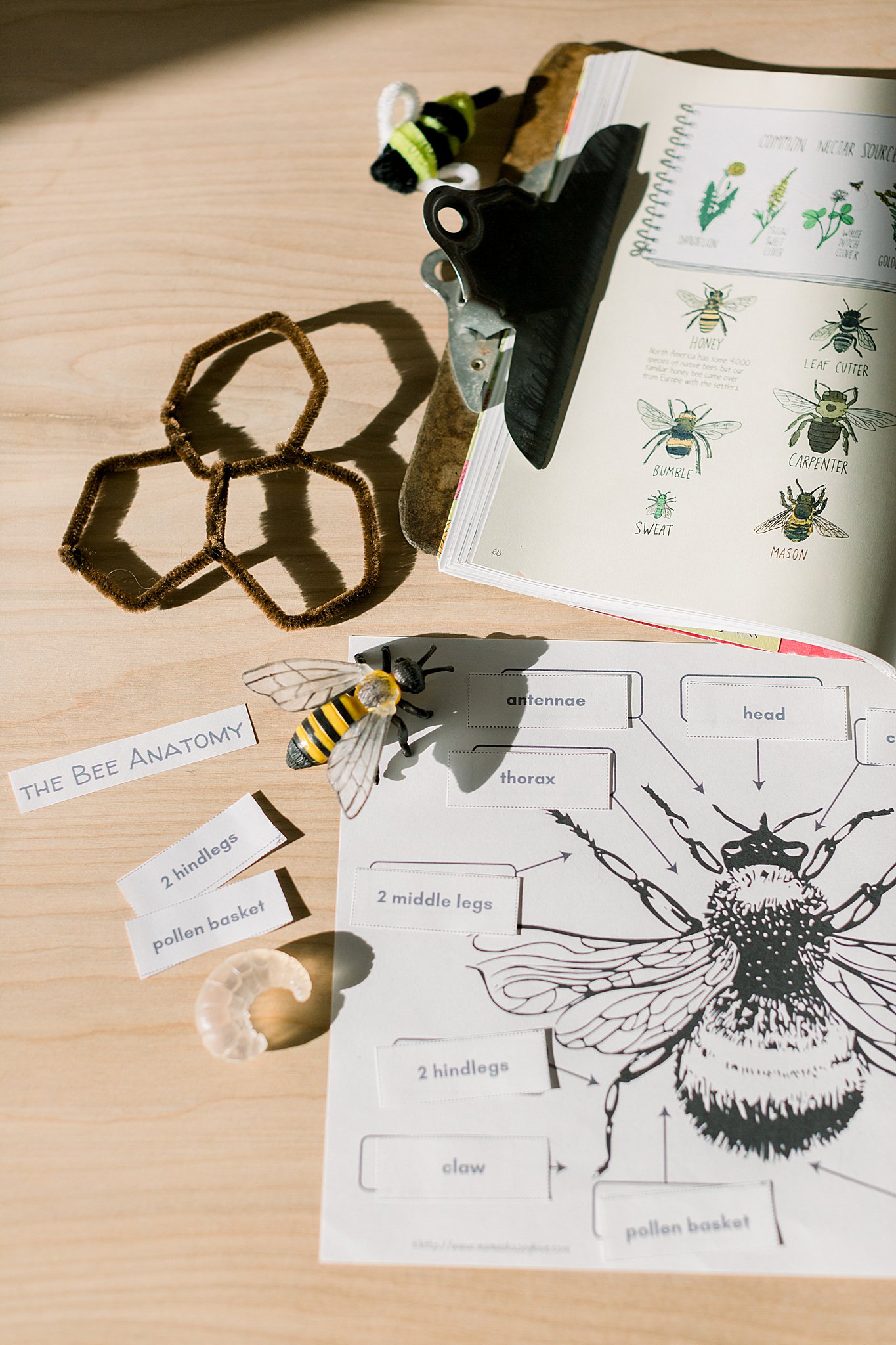As homeschoolers, my family is always looking for unique learning opportunities. One of our favorite topics to explore is the life cycle of the honey bee. By learning about the different stages of the bee life cycle, we can gain a deeper understanding of the importance of these creatures in our environment.
A Family’s Journey to Understanding and Supporting the Honeybee Life Cycle and its Vital Role in Our Lives.
The Queen bee’s role in the Honey bee life cycle
We start by learning about the queen bee’s role in the hive. We understand how she lays eggs, which then hatch into larvae. Worker bees feed the larvae until they pupate and andamorphose into adult bees.
Quick facts about the Queen & Drone Bees:
- The Queen Bee typically only leaves the hive once. In the spring, she leaves her colony and flies to the drone congregation area, where she will mate with about a dozen or two drone bees. This is the drone bees’ only job. Once they mate with a Queen from another hive, they pass away.
By understanding the different stages of the bee life cycle, we can appreciate the complexity and beauty of these creatures. We can also better understand bees’ environmental challenges and how we can help support them.
Learning about the bee life cycle has been a fun and engaging way for my family to expand our knowledge and understanding of the natural world. We are grateful for the opportunity to learn together and appreciate the fantastic creatures surrounding us.
Honey Harvest Event
One of the ways as a family that we’ve learned more about bees, their life cycle, and beekeeping is by attending the Honey Harvest at Crossroads at Big Creek. Immersing ourselves in the event has been an enlightening experience that allowed us to gain a deeper understanding and appreciation for the honey bee life cycle while supporting these vital creatures.
You can find it on our blog here if you’re curious to read about our firsthand experience.
Educational Resources
Each year, we do a bee unit, diving a little deeper. Bees are a favorite topic of ours. Here, I’ve collected a few educational resources if you want to add this to your homeschool curriculum or just a fun mini-unit.
Bee Unit by Stephanie Hathaway Designs
Honey Bee and Beekeeping Study Unit by Fun Mom Printables
Video links: (Please make sure to prescreen all video links before sharing with your child, some language may not be suitable for your children regarding the nature of reproduction and death)
Watch a Timelapse of bees hatching by National Geographic.
How do honeybees get their job?
Bee Facts: All About Honeybees, Bumblebees, & Queen Bees
Books & Stories:
“The Bees & the Kingbird” & “A Swarm Leaves the Bee Tree” from Among the Forest People
Nature Anatomy by Julia Rothman, pages 68-69
Farm Anatomy by Julia Rothman. I highly recommend Julia’s book series to new or fellow homeschoolers. It covers a range of bee-related topics including Bee Anatomy, types of honey bees, parts of a hive, a few things about the honeycomb, parts of a flower, common nectar sources, and beekeeper’s essentials. You can find detailed information on these topics in pages 166-169 of the book.
The Honey Bee Life Cycle


Check out some of the other homeschool activities and events. On our blog’s personal section, particularly the new homeschool section. We hope you enjoy and share your experiences with us in the comments below or on social media!